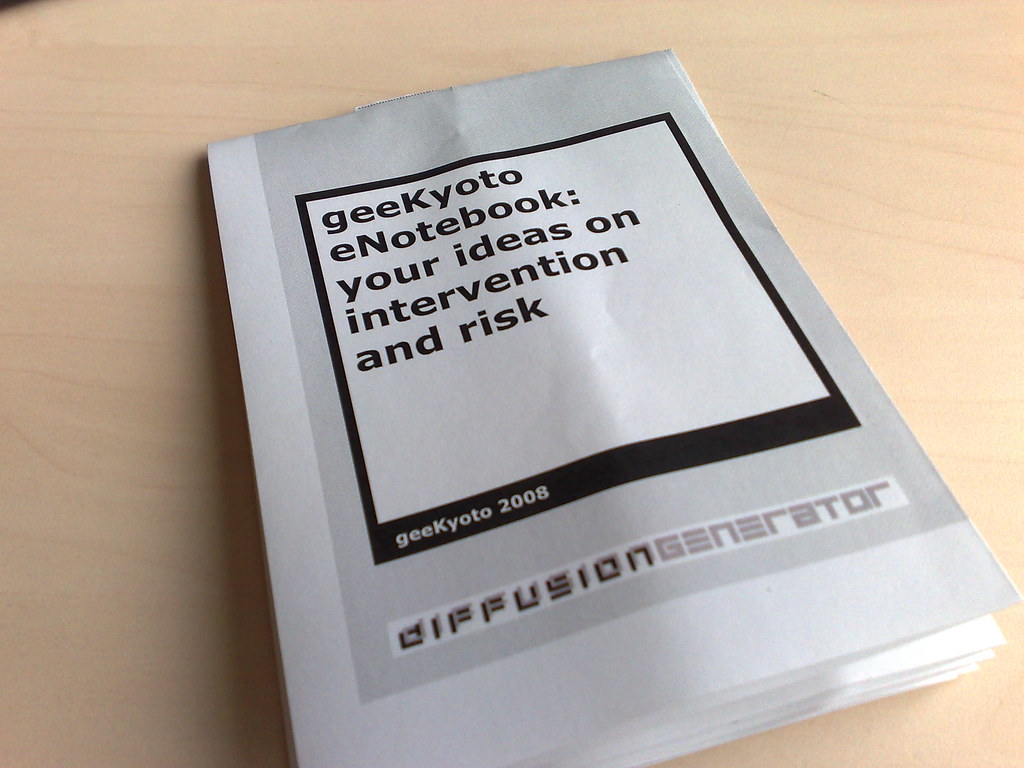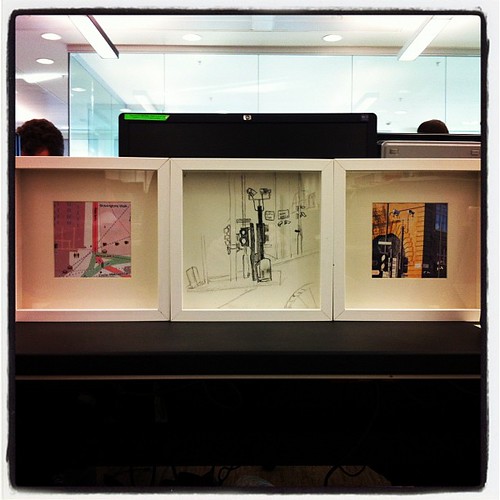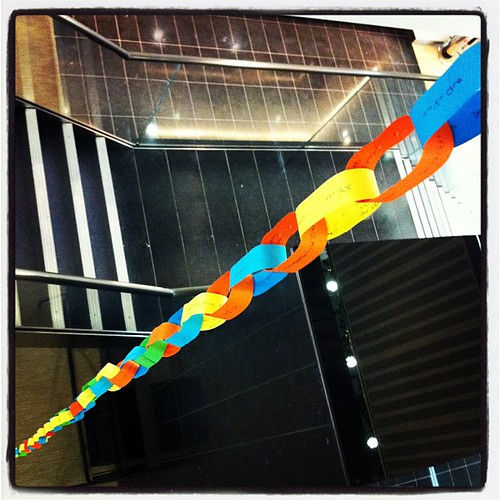then
When we did the geekyoto conference, Giles Lane printed up a set of notebooks and storycubes that we had around the venue. These were from the diffusion system that they had developed.

now
Bookleteer is a platform from Proboscis. I first became aware of their work whilst I was at the BBC and I discovered their Urban Tapestry project. I have stayed in touch since then, Giles also being a supporter of the Geekyoto conference.
Bookleteer has had an API for a while and I have been meaning to get around to doing stuff with it, now with some time to do some experiments and small ideas I have finally gotten around to it.
It works with so many of the ideas and projects that I have been working with and thinking about over the last few years that this is I feel one of the most exciting and important pieces of experimental work that I will have done in ages.
Now, I am also going to take on board some of what Tom Armitage spoke about at the recent dConstruct conference in Brighton, specifcially when he mentioned the (amazing) work of James Bridle. The Ideas to Actual Projects ratio. I’m not aiming at finished products, these are sketches and learnings and components of ideas. From building these I intend to learn more about how some things work, how they might work together and how they might be used.
Now the first one out of the box is rather a cheat, in discussions with Giles he mentioned how he was planning on writing some code to generate blank notebooks. So I have taken that as a starting point and done just that.
The notebook app allows you to select the type of book (classic reporters notebook or book type fold), whether you want blank pages or a grid and the number of pages. You can also give your notebook a title and it will go off and get the bookleteer system to generate the PDF. You can then download, print this and create your bespoke notebook.
There is lots is does not do:
- At the moment it just uses my access token, so, ha after all this access to it is rather limited. This is something to work out with bookleteer and myself. If you want a go then drop me an email.
- It should really do clever stuff like put the request to the Bookleteer API into a queue and let you know when its ready, rather than just wait for it a single process at a time.Thats a scale thing, something I may do later.
- The grid is quite large at the moment, creating backgrounds for the pages is quite easy, they are just small jpegs repeated in a div tag in the HTML that describes the page. So I need to play about with images and sizes to give you some options on grid size.
- Potentially other backgrounds can be made.
- At the moment all the notebooks are private, when you create a book in bookleteer you get the option to make it public into their library, I just didn’t want to clog up the library with lots of bespoke notebooks, especially when they are titled like ‘notes for this specific day/location’

This is just a first experiment with the API and starting to get my rusty code skills back into shape. Visit the Proboscis site and read about their project linking notebooks and the new publishing venture The Periodical. This whole concept of being able to create bespoke notebooks that are then used in a project and then, added back into the digital system is one of the reasons this platform is so exciting.
Since each book is made of A4 pages, once you have finished writing in it, sticking in pictures, sketching, whatever, unfold the book and scan the pages back in. Its not much work to re-flow the scanned pages back into a downloadable and printable book again. You can also then send that off to be printed in short runs. (or long runs if you need).
There is a lot of power and potential in this platform as each book is not just a book. It can be the gateway to online conversations and allow online to reach out into spaces where the technology is still not easily accessible. It’s like Michal Migurski‘s Walking Papers project but reaches beyond just maps and location.
I think of it as forming a part of the whole ecology of projects like Newspaper Club and even Bergs upcoming Little Printer but unlike those projects it still has that samizdat feel, that route to be useful to people who still don’t go online or have the facility to explore the internet or even just find thinking with paper and pen more their thing.
Upcoming, mini atlases, museum trips and storytime.





